Key takeaways:
- Selective mutism is an anxiety disorder where affected children can speak normally at home but are silent in social settings due to fear of judgment.
- Setting personal boundaries is essential for emotional well-being and can enhance support for those with selective mutism.
- Recognizing and prioritizing personal feelings helps prevent emotional burnout and fosters healthier relationships.
- Assertive communication, including the use of “I” statements, promotes clearer interactions and strengthens boundaries.
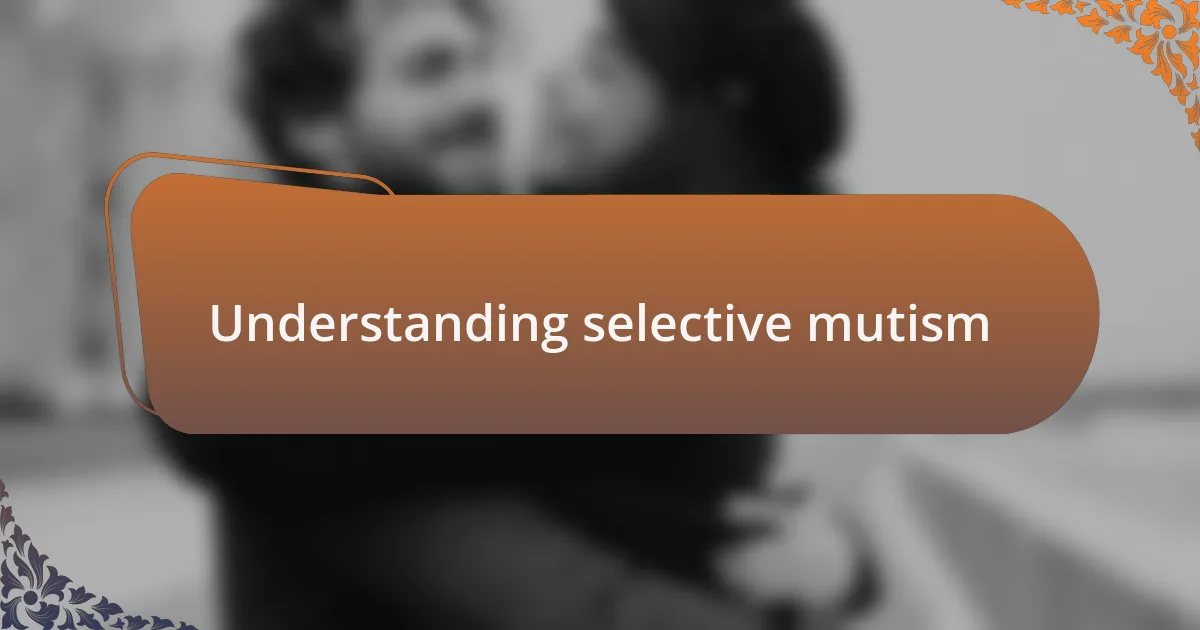
Understanding selective mutism
Selective mutism is a complex anxiety disorder that primarily affects children, manifesting as an inability to speak in specific social situations despite having the capacity to communicate normally in other environments. I still remember the first time I learned about selective mutism; it struck me how a child could be articulate and expressive at home but become completely silent in a classroom. Isn’t it puzzling how fear can silence the most vibrant voices?
Imagine the confusion and frustration not just for the child but for parents and teachers as well. I recall speaking with a parent of a child with selective mutism, who shared the emotional toll it took on their family. How do you support someone who wants to speak but is trapped by anxiety? Understanding this condition requires empathy and patience, as each person’s experience is unique.
At its core, selective mutism goes beyond just not speaking; it involves a fear of judgment and a deep-rooted anxiety that can feel overwhelming. Personally, I’ve witnessed how creating a supportive environment can help gradually ease the pressure on those affected. What if we considered more than just words and began to listen to the unspoken communication?
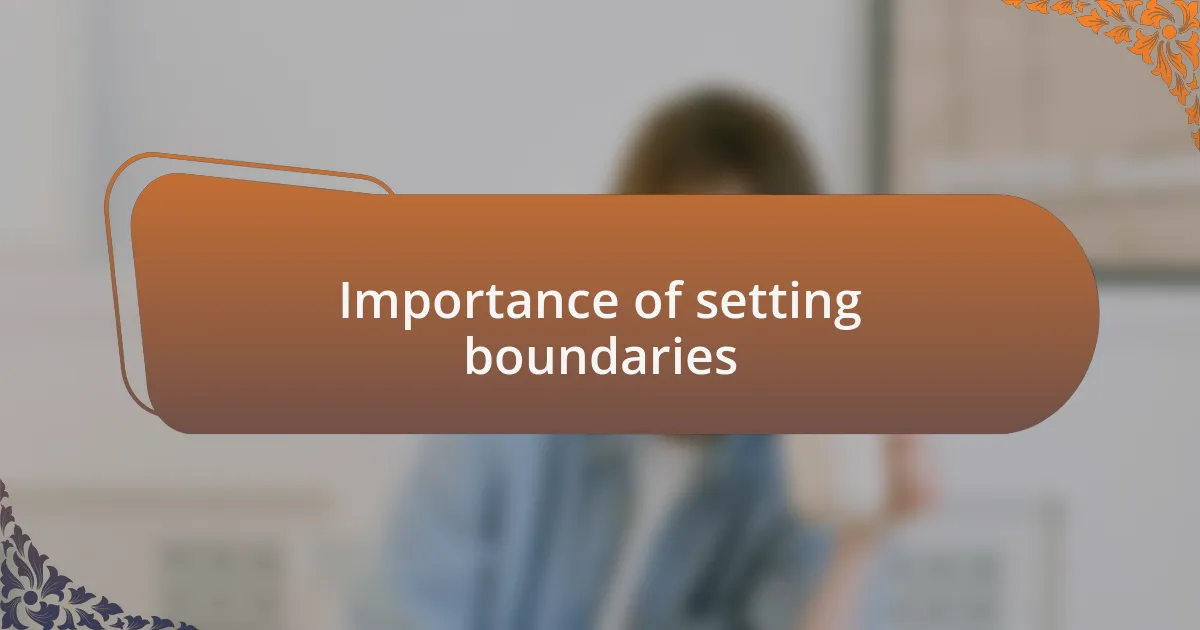
Importance of setting boundaries
Setting boundaries is crucial for fostering a safe environment, especially for those navigating the challenges of selective mutism. I remember a time when I felt overwhelmed with obligations, leading to a situation where I wasn’t able to support a friend who needed me. By realizing that I needed to set limits on my availability, I discovered I could prioritize my well-being while still being present for others. Isn’t it interesting how putting ourselves first can enable us to be better support systems?
When we fail to establish clear boundaries, we may unintentionally contribute to the anxiety that individuals with selective mutism feel. I once spoke to a teacher who struggled to manage her classroom while accommodating a child with selective mutism. She found that without an understanding of her own limits, she was unable to create an environment where the child felt comfortable. Isn’t it powerful to think that by recognizing our own needs, we can positively impact others?
Moreover, setting boundaries helps distinguish between our own feelings and the emotions of those around us. Reflecting on my journey, I recall moments when I neglected my emotional health in attempts to help friends. This led to fatigue and frustration. Recognizing the need to prioritize my feelings allowed me to better understand and support those dealing with complexities like selective mutism. What if we all took a moment to evaluate our boundaries? Could it lead to healthier relationships and a more compassionate approach to understanding others?
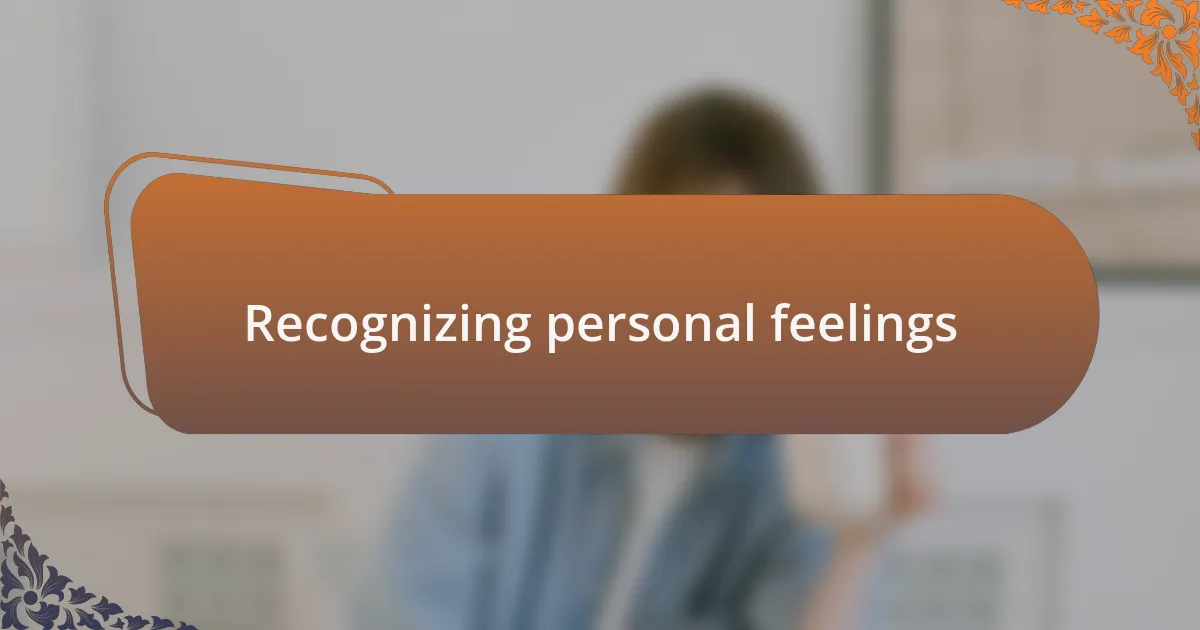
Recognizing personal feelings
Recognizing personal feelings is an essential step in establishing boundaries that work for you and others. I recall a time when I felt an almost palpable tension whenever I was asked to join social events, yet I continued to say yes. It took an uncomfortable, yet enlightening conversation with a close friend for me to realize I was overwhelmed, and saying yes wasn’t a true reflection of my feelings. Isn’t it remarkable how often we overlook our own emotions in favor of pleasing others?
Sometimes, emotions can be confusing, especially when the expectations of those around us weigh heavily on our minds. Once, I faced an intense internal struggle during a family gathering; I wanted to enjoy the time with loved ones, yet I felt trapped by the constant chatter. That frustration led me to acknowledge my need for a quiet space, even if it meant stepping away briefly. How often do we find ourselves in situations where acknowledging our discomfort could lead to a healthier experience?
It’s all too easy to dismiss our own feelings while focusing on others’, but this neglect can lead to emotional burnout. I remember a period when I was constantly available to support friends through their challenges, but I felt drained and frustrated. Once I recognized that my emotional state matters too, I began to prioritize my well-being, creating a healthier balance in my relationships. Have you ever considered how tuning into your feelings might enhance the way you interact with others? It’s a powerful realization that can change not just how we feel, but how we contribute to the lives of those around us.

Identifying boundary violations
Identifying boundary violations often begins with recognizing that discomfort has a voice. I once found myself in a work meeting where a colleague continually interrupted me, dismissing my ideas. Initially, I brushed off my irritation, but it soon became clear that this was more than just an annoyance; it was a violation of my professional space. Have you ever noticed how some interactions can sap your energy rather than energize you?
Sometimes, boundary violations manifest in subtler ways that can be harder to pinpoint. For instance, during a volunteering event, a fellow volunteer edged too close, invading my personal space, and I felt an overwhelming sense of unease. I realized then that boundaries aren’t just about physical space; they also pertain to emotional and psychological comfort. How often do our environments push us to tolerate discomfort instead of asserting our needs?
It’s crucial to validate our feelings when we sense something is off. I remember a situation where a friend would frequently need something from me last minute, creating a sense of obligation that left me feeling resentful. When I took a step back to examine the situation, I recognized that not only was my time being disregarded, but my feelings were too. Have you taken note of how these interactions can shape your emotional landscape? Understanding these violations helps create a clearer path toward protecting our boundaries.
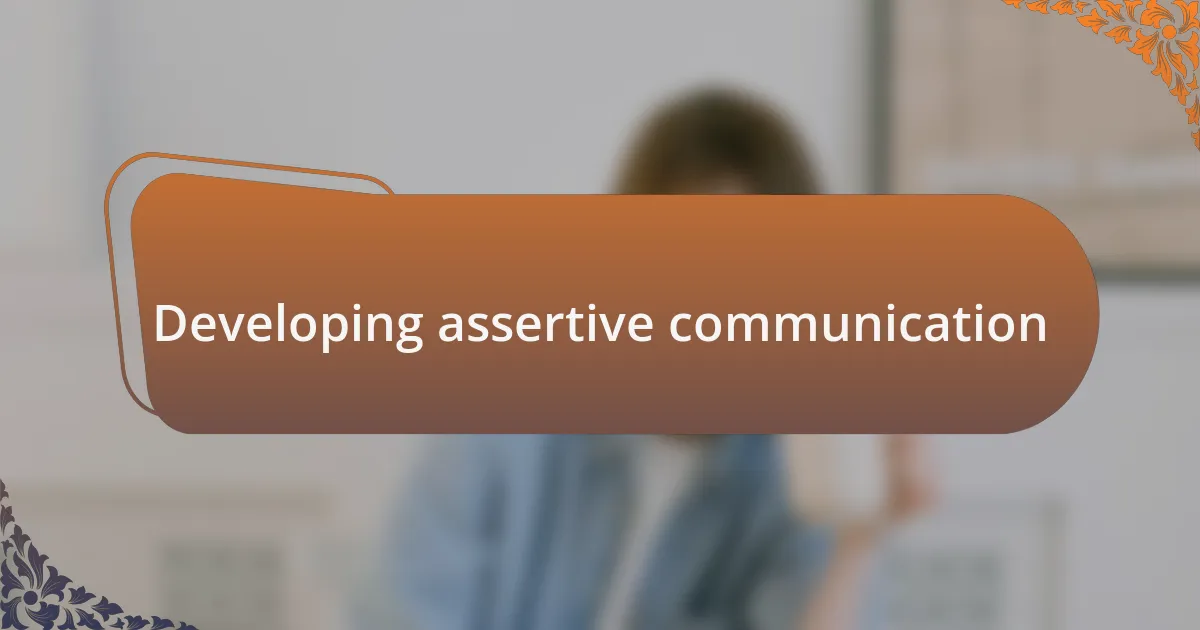
Developing assertive communication
Developing assertive communication is essential for establishing and maintaining boundaries. I remember sitting in a coffee shop, trying to explain to a friend why I couldn’t help them with a project last minute. I hesitated at first, but as I practiced speaking clearly and directly, I felt a sense of relief wash over me. Have you ever experienced that moment when you finally voice something that’s been stuck in your throat?
Taking the leap into assertiveness can feel daunting, but it doesn’t have to be overwhelming. One approach that worked for me was using “I” statements to express my feelings. For example, I would say, “I feel overwhelmed when plans change at the last minute,” instead of blaming others. This shift in language not only made my point clearer, but it also fostered understanding. How might your conversations change if you incorporated this technique?
I found that role-playing scenarios with a trusted friend helped me build confidence in my assertive communication. We practiced different situations where I could assert my needs, and it was a game-changer. There’s something empowering about hearing your voice express boundaries confidently. Have you found support in those around you when trying to be more assertive? Each step taken toward assertiveness can strengthen your relationships and protect your emotional well-being.
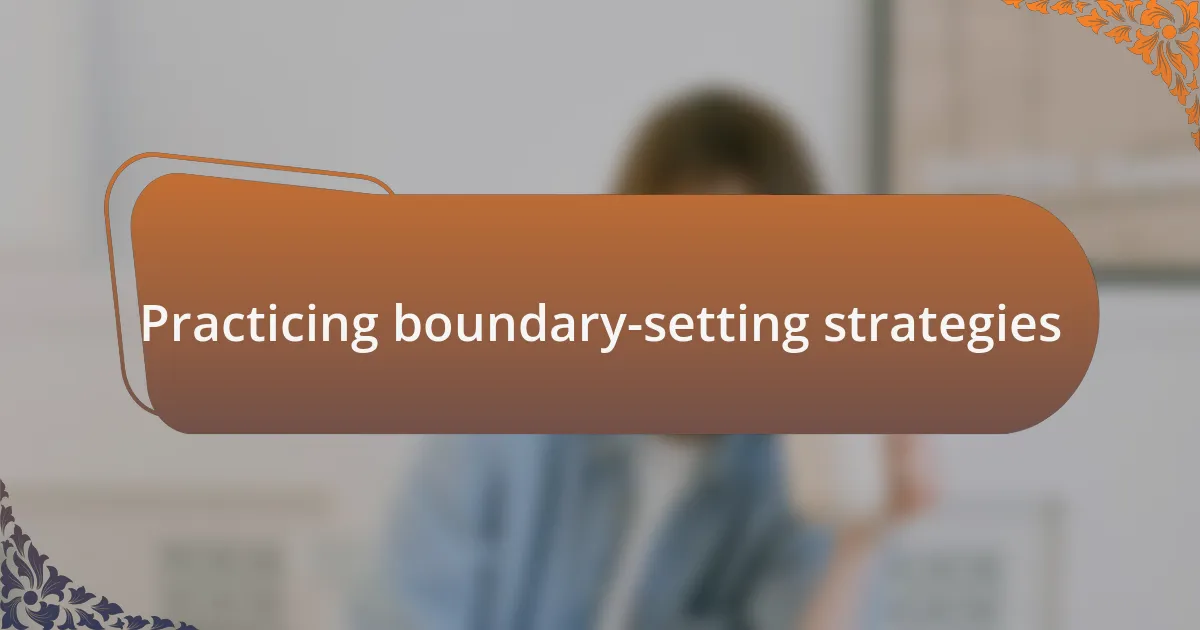
Practicing boundary-setting strategies
Practicing boundary-setting strategies can sometimes feel like stepping onto a tightrope. I recall a time when I had to confront a family member who often interrupted me during conversations. Before I did this, I felt a mix of anxiety and determination—would they understand? I decided to approach the topic gently, saying, “I appreciate our chats, but I’d love for you to let me finish my thoughts.” The positive response I received surprised me and reinforced my belief in the power of open dialogue.
Another technique that I found invaluable was identifying my limits beforehand. There was a situation at work where I was asked to take on more projects than I could handle. Instead of agreeing and silently fuming later, I took a moment to calculate my capacity. I said, “I can take on this project, but I’ll need to postpone the other tasks for now.” That clarity not only helped me manage my workload but also allowed my colleagues to respect my boundaries. Have you ever taken a moment to pause and reflect on what you can realistically take on?
Visualizing boundaries as a protective shield can also help make the concept more tangible. I often imagine myself in a light, transparent bubble when I articulate my needs. This imagery empowers me to express myself without fear. Once, during a social gathering, I felt overwhelmed by the crowd. I found a quiet corner and gently told my friends, “I need a few moments to recharge.” That small act of self-care was liberating, reinforcing the idea that it’s okay to prioritize my well-being. How do you envision your boundaries?
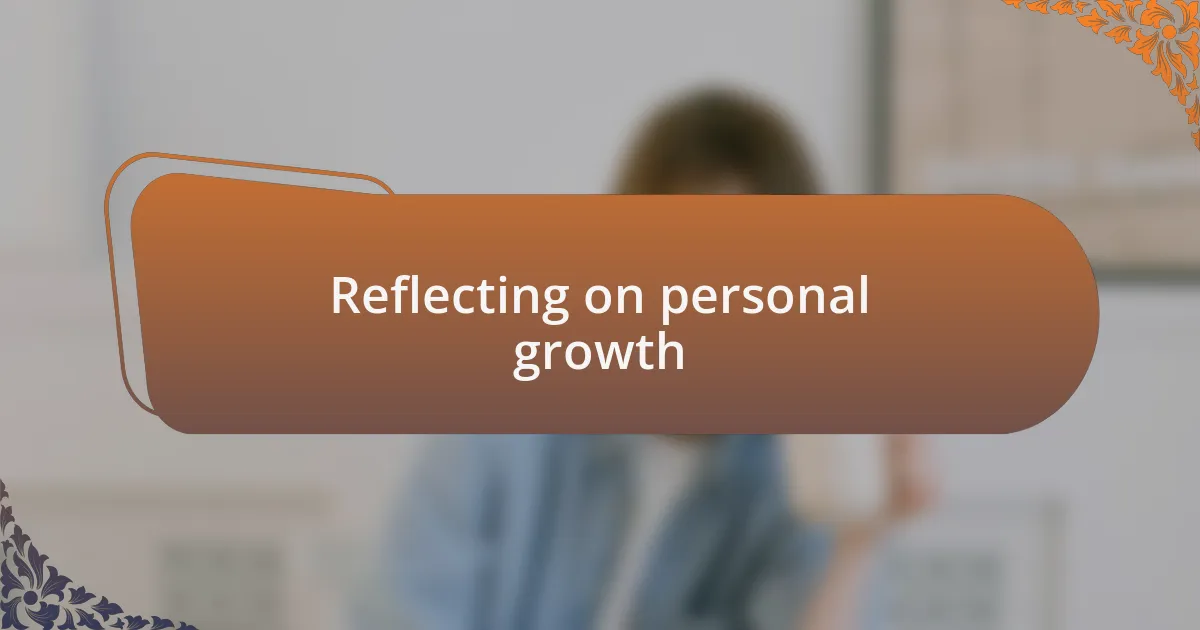
Reflecting on personal growth
Reflecting on personal growth often uncovers the strides we’ve made in asserting ourselves. I vividly remember the first time I declined an invitation to an event that didn’t resonate with me. It felt liberating to say, “Thank you for the invite, but that’s not really my scene.” In that moment, I realized that prioritizing my preferences was just as important as maintaining my relationships.
There was also a significant shift in how I viewed discomfort. Initially, I used to associate boundary-setting with confrontation, which left me feeling anxious. Over time, I learned that standing firm in my values can actually cultivate deeper connections. When a close friend asked me for a favor that I knew would stretch me thin, I calmly said, “I can’t take that on right now, but I’m here to support you in other ways.” The relief I felt afterward was profound, proving that honesty fosters respect.
As I continue this journey, I often reflect on the lessons learned through each experience. Have you ever recognized how much you’ve evolved in your interactions? It’s remarkable to witness how setting boundaries has not only shaped my self-image but has ultimately led to healthier relationships with others. Each challenge faced has nudged me toward a stronger sense of self-awareness, helping me navigate life with confidence.